
Document Source: Infantry School, General Section, Military History Committee, Fort Benning, Georgia, Advanced Officers Course (1946-1947). Operations of How Company, 2nd Battalion, 350th Infantry Regiment, 88th Infantry Division, in MonteRumici, Vicinity of Bologna, Italy, Po Valey Campaign, April 15-18, 1945. Personal Experience of a Company Commander, Capt Earl E. Danley, Infantry

 This report covers the operations of How Co, 350-IR (88-ID under the Command of Gen Paul W. Kendall, in the capture of Monterumici and the breakthrough of the German Lines at the start of the Po Valley offensive in April 1945. To bring the reader up to date a summary of the major events leading to this action will be given as follows.
This report covers the operations of How Co, 350-IR (88-ID under the Command of Gen Paul W. Kendall, in the capture of Monterumici and the breakthrough of the German Lines at the start of the Po Valley offensive in April 1945. To bring the reader up to date a summary of the major events leading to this action will be given as follows.
During the previous ten months the Allied Forces, composed of the British 8-A and the US 5-A, had fought their way up the Italian Peninsula from the battlefields of Monte Cassino and Anzio, through Rome and Florence to within ten miles of Bologna. There, in November 1944, the offensive ground to a halt. The stubborn German resistance had stopped the Allied drive just short of the Po Valley. The enemy had managed to hold a very strong position on the edge of the mountains, thus forcing the Allied Armies to stay all winter in the high Apennines with exposed positions and long and hazardous supply routes. Throughout the winter months, both sides dug in and reinforced their positions. The Allied divisions were re-grouped and re-trained; new divisions were brought in and supplies were built up for the coming offensive in the spring. The mission of the Allied Armies in Italy was to contain the enemy forces, consisting of some twenty-five first-rate German Divisions and five Italian Fascist Divisions, thus preventing the use of these units on the Eastern and Western fronts. Also, the Allies had to prepare for the final task of destroying these enemy units to prevent their withdrawal to the Alps and the prepared defenses of Hitler’s Bavarian Redout region where the struggle would be prolonged.
General Situation
In the spring of 1945, the US 5-A and the UK 8-A still faced the enemy in about the same general positions across the northern edge of the Apennines. Some improvement was made in the 5-A sector when the newly arrived US 10-MD (Mountaineers) made a limited objective attack in February to clear Monte Belvedere along Highway 64. The 5-A, commanded (then) by Gen Lucian K. Truscott, was spread over ninety miles of front, extending from Massa on the Ligurian Sea to Monte Grande, east of Highway 65.
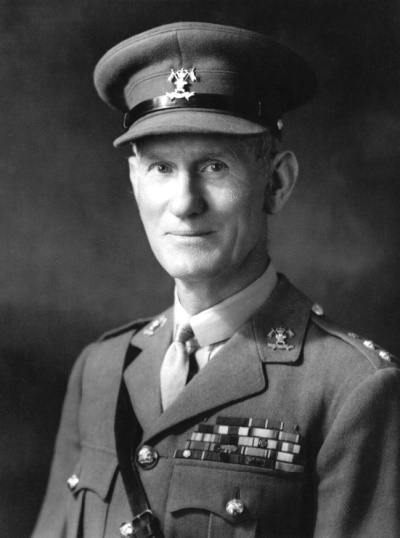 The British 8-A (under the command of Gen Richard McCreery) tied in with the US 5-A (Gen Lucian K. Truscott) at Monte Grando and extended east to Lake Commancchio and the Adriatic Sea. The Allied Divisions were in good condition; the troops had rested and re-trained for over four months. Supplies were piling up in the rear of the defense line. The Air Corps, with almost complete air superiority, continued to block the enemy’s communication lines from Bologna to the Brenner Pass.
The British 8-A (under the command of Gen Richard McCreery) tied in with the US 5-A (Gen Lucian K. Truscott) at Monte Grando and extended east to Lake Commancchio and the Adriatic Sea. The Allied Divisions were in good condition; the troops had rested and re-trained for over four months. Supplies were piling up in the rear of the defense line. The Air Corps, with almost complete air superiority, continued to block the enemy’s communication lines from Bologna to the Brenner Pass.
The Enemy forces, although badly battered in the fall campaign, were still intact and fairly well situated behind their prepared defenses of the Genghis Kahn Line. The enemy had made good use of the winter months to improve his positions and replace and re-train his depleted divisions. He had carefully conserved supplies all through the winter. Ammunition, especially artillery, was used only when absolutely necessary. Troops were moved by foot and maximum use was made of horses and oxen to conserve the critically short supply of gasoline.
The Germans used the rich agricultural and industrial region of the Po Valley to make their forces vitally self-sustaining. The main enemy defense, the Genghis Kahn Line, ran from Vergatto west of Highway 64 to Monte Grande. It was anchored in the center on Monte Sole, Monterumici, and Monte Adone blocking Highway 64 and Highway 65, the two main approaches to Bologna. This line was made up of mutually supporting strong points consisting chiefly of fortified stone farmhouses, concrete pillboxes, and special cave positions. Typical German use was made of machine guns and mines to block all avenues of approach to his positions. He massed hundreds of mortars to assist the infantry with strong points. Additional defense lines were prepared in-depth behind the Po River and Adige River.
 (Doc Snafu & Wikipedia) The British 8-A participated in the Italian Campaign which began with the invasion of Sicily (Operation Husky). When the Allies subsequently invaded Italy, elements of the 8-A landed in the ‘toe’ of Italy (Operation Baytown) and at Taranto (Operation Slapstick). After linking its left flank with Gen Lucian K. Truscott’s 5-A, which had landed at Salerno, the British 8-A continued fighting its way up Italy on the eastern flank of the Allied forces. Together these two armies made up the Allied Armies in Italy (later redesigned 15th Army Group, under Gen Sir Harold Alexander).
(Doc Snafu & Wikipedia) The British 8-A participated in the Italian Campaign which began with the invasion of Sicily (Operation Husky). When the Allies subsequently invaded Italy, elements of the 8-A landed in the ‘toe’ of Italy (Operation Baytown) and at Taranto (Operation Slapstick). After linking its left flank with Gen Lucian K. Truscott’s 5-A, which had landed at Salerno, the British 8-A continued fighting its way up Italy on the eastern flank of the Allied forces. Together these two armies made up the Allied Armies in Italy (later redesigned 15th Army Group, under Gen Sir Harold Alexander).
At the end of 1943, Gen Montgomery was transferred to Britain to begin preparations for Operation Overlord. Command of the 8-A was given to Gen Oliver Leese, previously the commander of XXX Corps, which was being returned to England. Following three unsuccessful attempts in early 1944 by the US 5-A to break through the German defensive positions (Winter Line), the 8-A was covertly switched from the Adriatic Coast in April 1944 to concentrate all forces, except the V Corps, on the western side of the Apennine Mountains alongside the US 5-A in order to mount a major offensive. This fourth Battle of Monte Cassino was successful with the 8-A breaking into central Italy and the 5-A entering Rome early in the month of June.
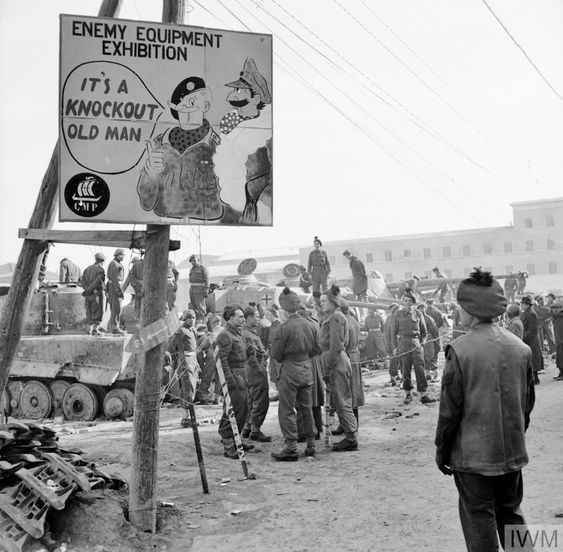 After the capture of Rome, the 8-A continued the fight northwards through central Italy to capture Florence. The end of the summer campaign found Allied forces butting up against the Gothic Line. The 8-A returned to the Adriatic Coast and succeeded in forcing the Gothic Line defenses, but ultimately the Allied forces could not break into the Po Valley before the onset of winter forced an end to serious offensive operations. During October, Leese was reassigned to South East Asia Command, and Gen Sir Richard L. McCreery, who had previously commanded X Corps, replaced him. The final offensive in Italy saw the 8-A back in action. Working in conjunction with the US 5-A, on its left flank, it cut off and destroyed, (during April), large parts of the opposing German Army Group C defending Bologna and then made a rapid advance through northeast Italy and into Austria. Problems occurred when British and Yugoslavian forces met. Josip Broz Tito’s forces were intent on securing control of the area of Venezia Giulia. They arrived before the British forces and were very active in trying to prevent the establishment of a military government in the manner that had applied to most of the rest of Italy. They even went as far as to restrict supplies through to the British zone of occupation in Austria and tried to take over part of that country as well. On May 2, 1945, the 2nd New Zealand Division liberated Trieste, and that same day, the Yugoslav Fourth Army, together with the Slovene 9th Corpus NOV entered the town. During the fighting on the Italian Front, the British 8-A had, from September 3, 1943, until May 2, 1945, suffered 123.254 casualties.
After the capture of Rome, the 8-A continued the fight northwards through central Italy to capture Florence. The end of the summer campaign found Allied forces butting up against the Gothic Line. The 8-A returned to the Adriatic Coast and succeeded in forcing the Gothic Line defenses, but ultimately the Allied forces could not break into the Po Valley before the onset of winter forced an end to serious offensive operations. During October, Leese was reassigned to South East Asia Command, and Gen Sir Richard L. McCreery, who had previously commanded X Corps, replaced him. The final offensive in Italy saw the 8-A back in action. Working in conjunction with the US 5-A, on its left flank, it cut off and destroyed, (during April), large parts of the opposing German Army Group C defending Bologna and then made a rapid advance through northeast Italy and into Austria. Problems occurred when British and Yugoslavian forces met. Josip Broz Tito’s forces were intent on securing control of the area of Venezia Giulia. They arrived before the British forces and were very active in trying to prevent the establishment of a military government in the manner that had applied to most of the rest of Italy. They even went as far as to restrict supplies through to the British zone of occupation in Austria and tried to take over part of that country as well. On May 2, 1945, the 2nd New Zealand Division liberated Trieste, and that same day, the Yugoslav Fourth Army, together with the Slovene 9th Corpus NOV entered the town. During the fighting on the Italian Front, the British 8-A had, from September 3, 1943, until May 2, 1945, suffered 123.254 casualties.
 (Doc Snafu & Wikipedia) The US 5-A was the principal combat formation of the US Army in the Mediterranean Teather during WW-2, and was the first US field army ever to be activated outside of the USA. Officially activated on January 5, 1943, at Oujda, French Morocco and made responsible for the defense of Algeria and Morocco. It was also given the responsibility for planning the American part of the invasion of mainland Italy, and therefore was not involved in the Allied invasion of Sicily (Operation Husky), where it was instead assigned the role of training combat troops destined for Sicily.
(Doc Snafu & Wikipedia) The US 5-A was the principal combat formation of the US Army in the Mediterranean Teather during WW-2, and was the first US field army ever to be activated outside of the USA. Officially activated on January 5, 1943, at Oujda, French Morocco and made responsible for the defense of Algeria and Morocco. It was also given the responsibility for planning the American part of the invasion of mainland Italy, and therefore was not involved in the Allied invasion of Sicily (Operation Husky), where it was instead assigned the role of training combat troops destined for Sicily.
The 5-A was initially commanded by Gen Mark Wayne Clark, who would lead the 5-A for nearly two years, and was to experience some of the toughest fightings of World War II, where it was engaged on the Italian Front, which was, in many ways, often more reminiscent of the trench warfare of the Western Front in WW-1. Writing to Gen Jacob L. Devers (American deputy to FM Sir Henry Maitland Wilson, Mediterranean Theater commander) in late March 1944, Clark explained the difficulties of the fighting in Italy so far, which could be said of the whole campaign. They were, he claimed, ‘terrain, weather, carefully prepared defensive positions in the mountains, determined and well-trained enemy troops, grossly inadequate means at our disposal while on the offensive, with approximately equal forces to the defender’. The 5-A first saw action during the Salerno landings (Operation Avalanche) in September 1943. Due to the low numbers of American troops available in the Mediterranean Theater, it was made up of one American and one British corps; the US VI Corps (Gen Ernest J. Dawley) and the UK X Corps, (Gen Richard L. McCreery). At Salerno, VI Corps landed on the right flank, the X Corps on the left flank. Progress was slow. However, heavy naval and air bombardment, along with a parachute drop by elements of the US 82-A/B, saved the forces from being driven back into the sea. Combined with the approach of the UK 8-A under Gen Montgomery whose 8-A had landed further south (Operation Baytown) six days before Operation Avalanche, the German 10.Army began to retreat. On September 20, by which time the US 5-A and the UK 8-A had linked up, Gen Dawley was relieved of his command by Clark. Later, Gen John P. Lucas, assumed command of the VI Corps.
Progress was then good for a couple of weeks and the US 5-A crossed the Barbara Line and the Volturno Line until the Germans turned, stood, and fought. They had established a position on the Winter Line (also known as the Gustav Line), which included the defensive positions at San Pietro Infine in the Liri Valley and at Monte Cassino. By this point, the 5-A had been reinforced by a US II Corps (Gen Geoffrey Keyes). By the end of November, Clark’s 5-A had almost doubled in size, with the addition of Gen Alphonse Juin’s French Expeditionary Corps, 130.247 men to 243.827. The VI Corps, with its experience of amphibious landings at Salerno, was chosen for the assault and withdrawn from the line, replaced by the French Expeditionary Corps. They made a second attempt to capture Monte Cassino in conjunction with the amphibious assault by the VI Corps, which again failed. The VI Corps landed at Anzio, unopposed, on January 22, 1944, (Operation Shingle), and suffered many of the same problems as had been seen at Salerno. A perceived lack of initiative on the part of the commander, Gen Lucas, combined with worries about the Germans catching VI Corps off balance if it advanced too far inland resulted in the beachhead being bottled up.
The Germans launched a series of attacks and counter-attacks, with both sides sustaining heavy losses, and nearly breached the last beachhead defenses before again being driven off by heavy naval and air support. The fault, however, was not due to Lucas’s incompetence; it was due instead to wishful thinking, faulty operational planning, and the German army’s ability to respond forcefully and aggressively. After the failure of Operation Shingle, a large reorganization took place. Previously the Apennines had been the rough dividing line between the 5-A and the 8-A. However, the dividing line was shifted westwards, to allow the concentration of both armies on the western side of Italy for maximum firepower to break through to Rome. The British V Corps was left on the Adriatic Coast to pin down any German units there. The 5-A was relieved of responsibility for Cassino and the final phases of that battle saw Indian, New Zealand, and finally, Polish troops thrown against the fortress.
The 5-A also lost McCreery’s British X Corps at this time, since it was felt that having exclusively American-organised units under the 5-A and British-organised units under 8-A would ease logistics. At this point, one of the more controversial incidents in the history of the 5-A occurred. The strategic conception of Gen Sir Harold Alexander, commanding the Allied Armies in Italy (15-AG), was that the forces of the VI Corps, coming out of Anzio, would trap the retreating German forces, and leave them to be annihilated by the advancing 5-A and 8-A. However, in contravention of orders, Clark diverted units of the VI Corps towards Rome, leaving a small blocking force to attempt to stop the Germans. It failed to do so, and the German forces were able to escape and re-establish a coherent line to the north of Rome. Clark claimed that there were significant German threats that necessitated the diversion, but many believe that he was primarily glory-seeking by being the first to liberate Rome.
Two days after Rome fell, on June 6, 1944, Operation Overlord was launched. The strategic conception of Overlord called for a supporting operation to be mounted by invading southern France. In order to do so, forces would have to be withdrawn from the Allied Armies in Italy. In the end, the VI Corps was withdrawn, forming the nucleus of the field forces of the US 7-A for the invasion of the French Riviera (Operation Dragoon). The French Expeditionary Corps was also withdrawn, to allow its men to be used for the French 1-A, a follow-up formation for Dragoon. In slightly less than two months, the strength of the 5-A dropped from 248.989 down to 153.323. However, the 25.000-strong Brazilian Expeditionary Force, under Marshal J.B. Mascarenhas de Morais, as well as other divisions had arrived to align with the US IV Corps (which had arrived in June) under (Gen Willis D. Crittenberger), so two corps were maintained within 5-A.
In the second half of 1944, the Allied forces fighting on the Italian Front (US 5-A and UK 8-A) resembled more a multi-national force being constituted by: Americans, including the segregated African & Japanese-Americans, the British, the French, members of French and British colonies, the New Zealanders, Canadians, Indians, Gurkhas, Black Africans, Moroccans, Algerians, Jews and Arabs from the British Mandate in Palestine, South Africans, Rhodesians), as well as Brazilians and exiled forces from Poland, Greece, former Czechoslovakia and anti-fascist Italians.
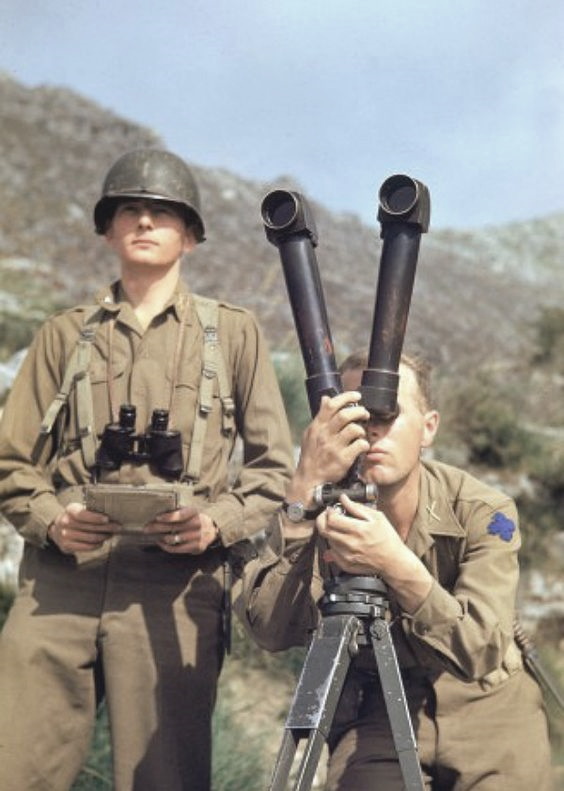 The Germans reestablished their line across Italy at the level of Pisa and Rimini. The Allied forces spent another winter, after fierce fighting in the summer and autumn in front of the Gothic Line, frustrated at their lack of ability to break through. This time, the 5-A with British XIII Corps (Gen Sidney Kirkman) whose relationship with Clark was apparently very stormy, was straddling the Apennines, with many of its units occupying highly exposed positions that were miserable to the garrison. That winter also saw a significant change of command. Gen Clark moved to command 15-AG and Gen Lucian K. Truscott was appointed to command the 5-A in his place. Truscott would command the Army from December 16, 1944, until the war’s end. Another change came in January 1945 when XIII Corps reverted to the control of the British 8-A, which had also seen many changes in composition and command (now under Gen Richard L. McCreery).
The Germans reestablished their line across Italy at the level of Pisa and Rimini. The Allied forces spent another winter, after fierce fighting in the summer and autumn in front of the Gothic Line, frustrated at their lack of ability to break through. This time, the 5-A with British XIII Corps (Gen Sidney Kirkman) whose relationship with Clark was apparently very stormy, was straddling the Apennines, with many of its units occupying highly exposed positions that were miserable to the garrison. That winter also saw a significant change of command. Gen Clark moved to command 15-AG and Gen Lucian K. Truscott was appointed to command the 5-A in his place. Truscott would command the Army from December 16, 1944, until the war’s end. Another change came in January 1945 when XIII Corps reverted to the control of the British 8-A, which had also seen many changes in composition and command (now under Gen Richard L. McCreery).
In the final offensive of the Italian Campaign launched in April 1945 against the German Army Group C, the British 8-A initiated the main offensive on the Adriatic Coast, and then the 5-A also broke through the German defenses around Bologna. The German units, in the main, were pinned against the Po River and destroyed, or at the very least deprived of their transport and heavy weapons, which effectively made many of them useless. The II Corps units raced through Milan towards the French Frontier and the great port of Genoa. The IV Corps pushed due north through Verona, Vicenza, and as far as Bolzano and to the Brenner Pass, where they linked up with elements of the US 7-A (Gen Alexander Patch). The role of the US 5-A in Italy cost 109.642 casualties in 602 days of combat, of which 19.475 KIAs. The 5-A HQs returned to the USA in September 1945 and the 5-A was deactivated on October 2, 1945, at Camp Myles Standish, Massachusetts.
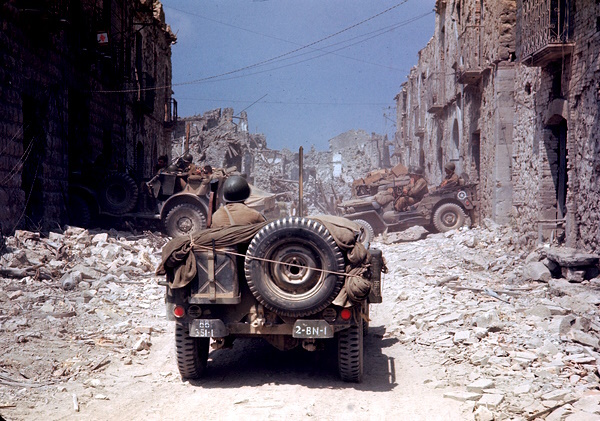






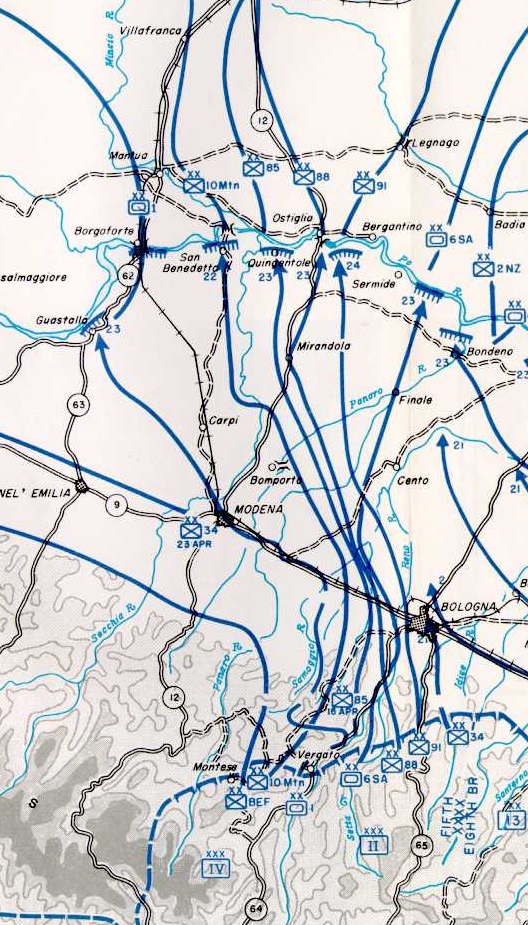
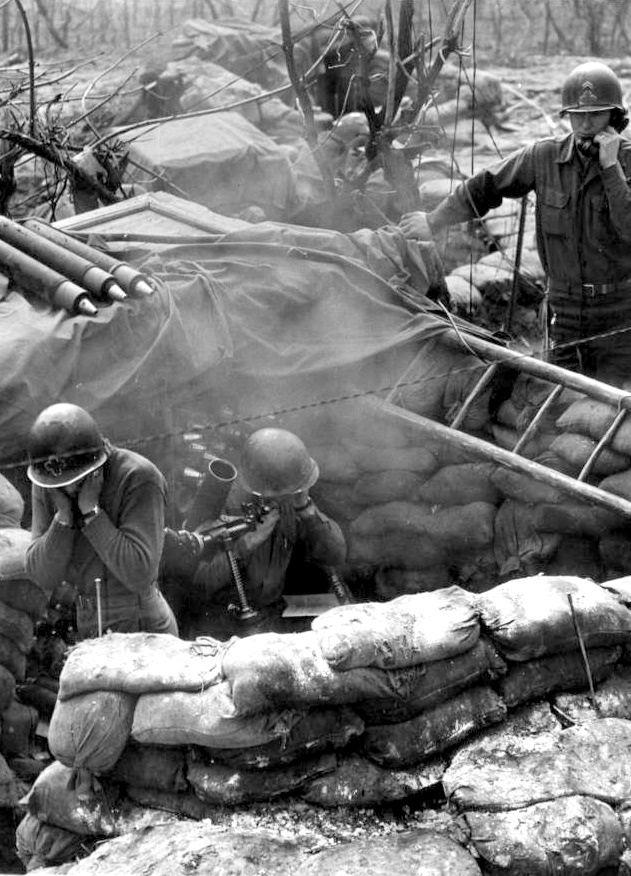
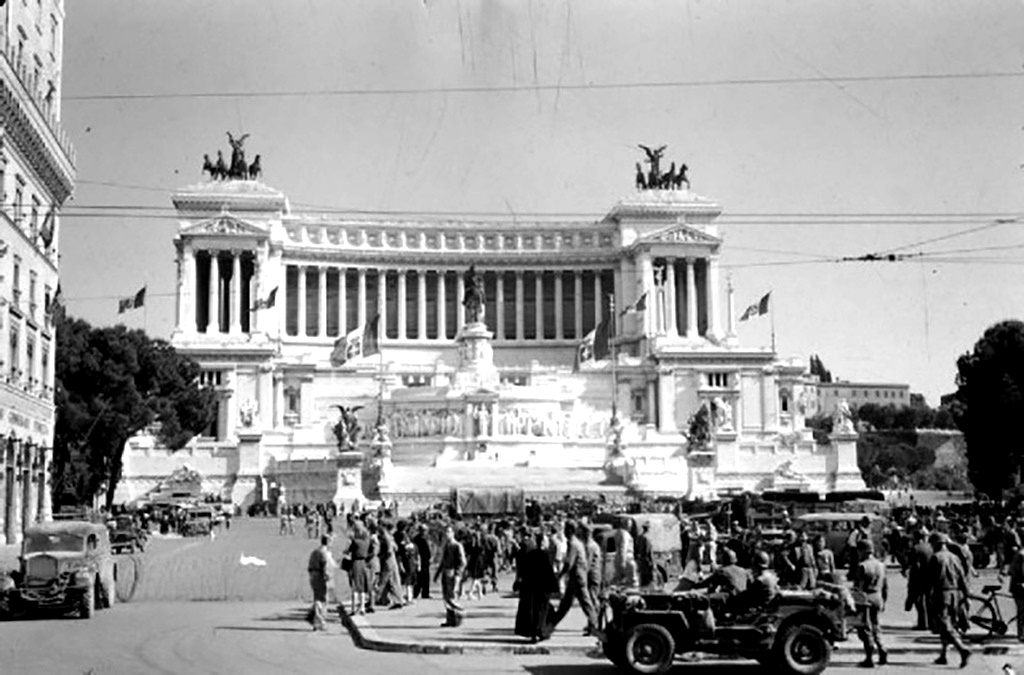






I was in the 313th combat engineers,88th inf.division blue devil’s
Hello Thomas
Welcome aboard.
I’ll see what I can find to publish about the 313 Engr
Doc